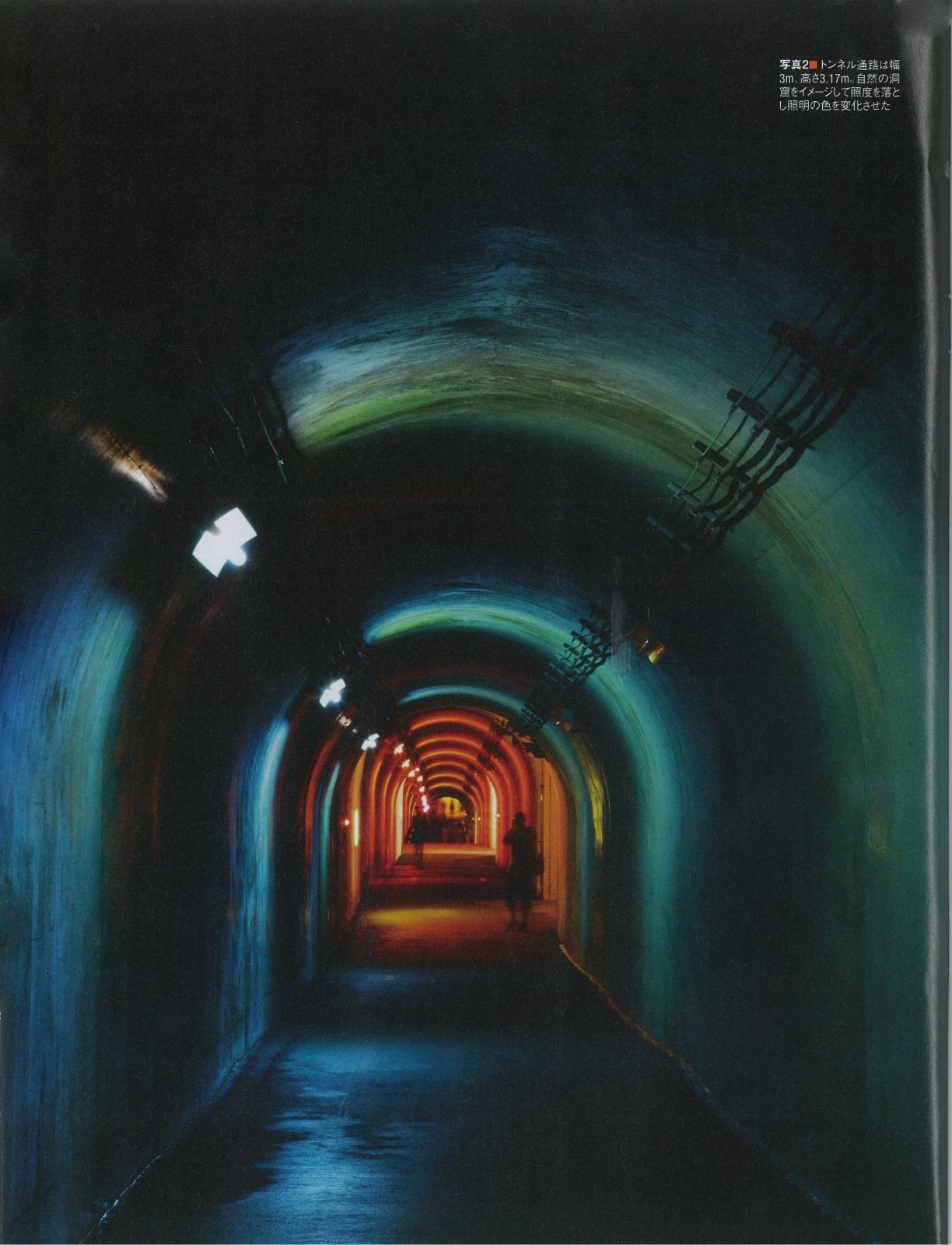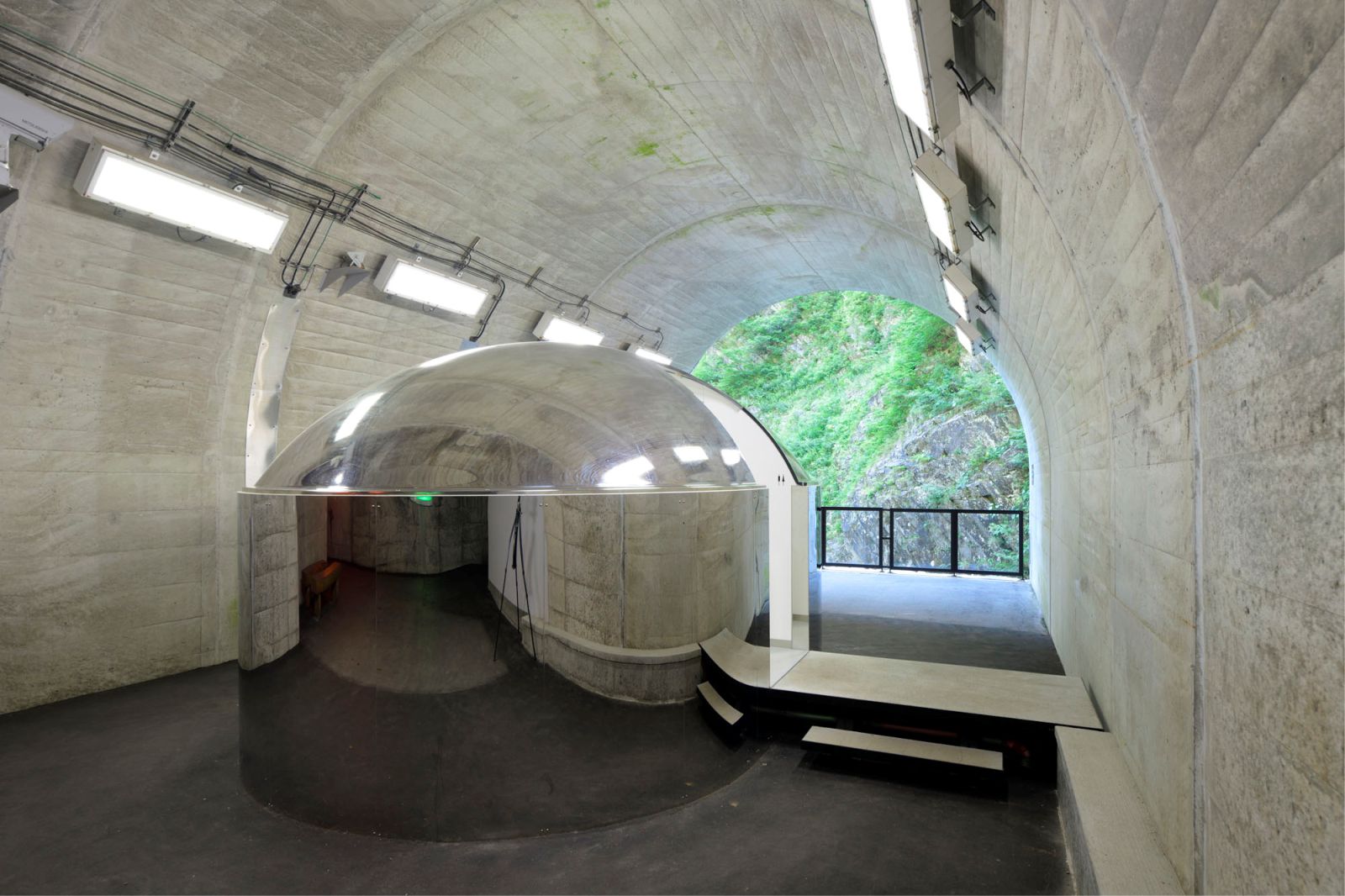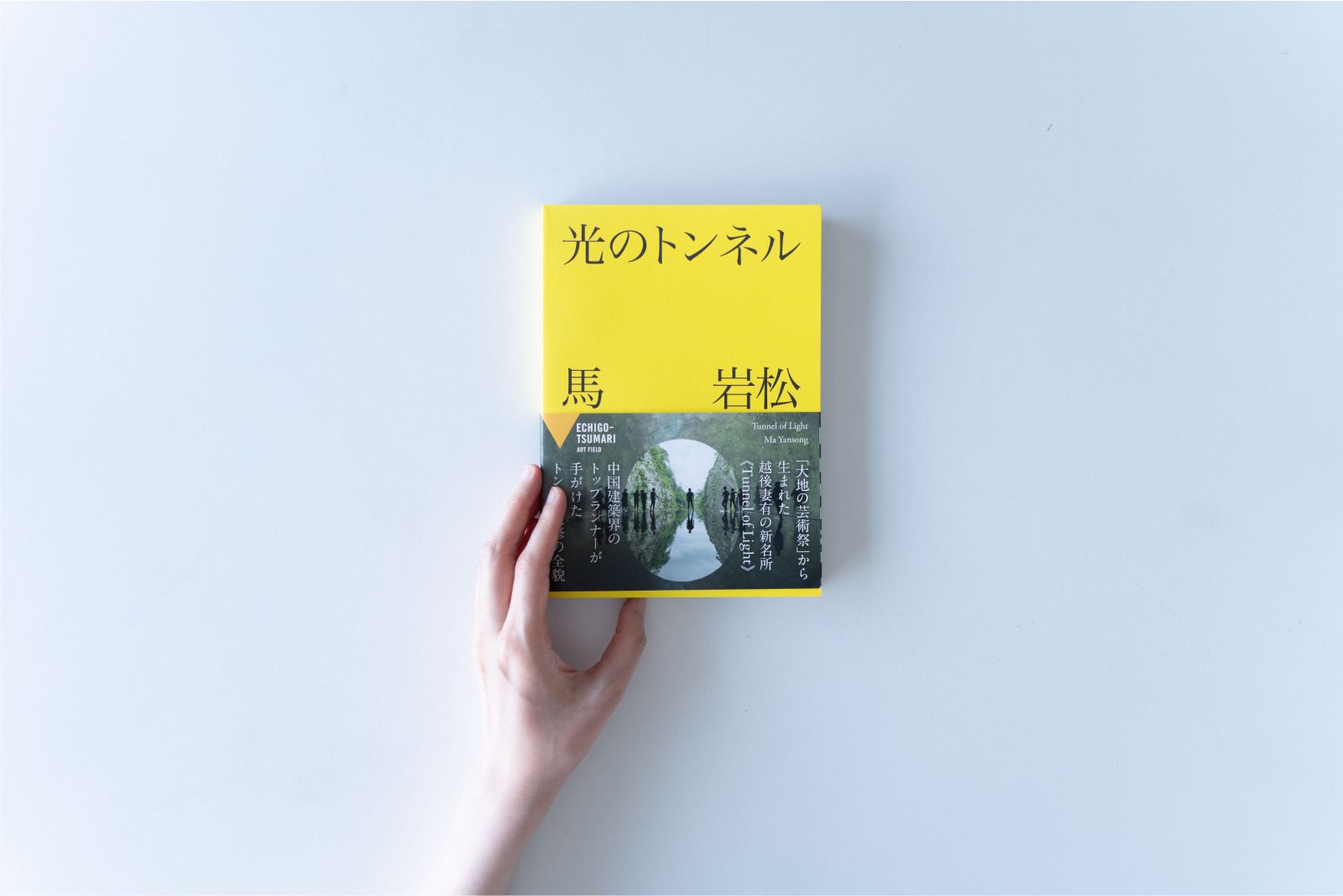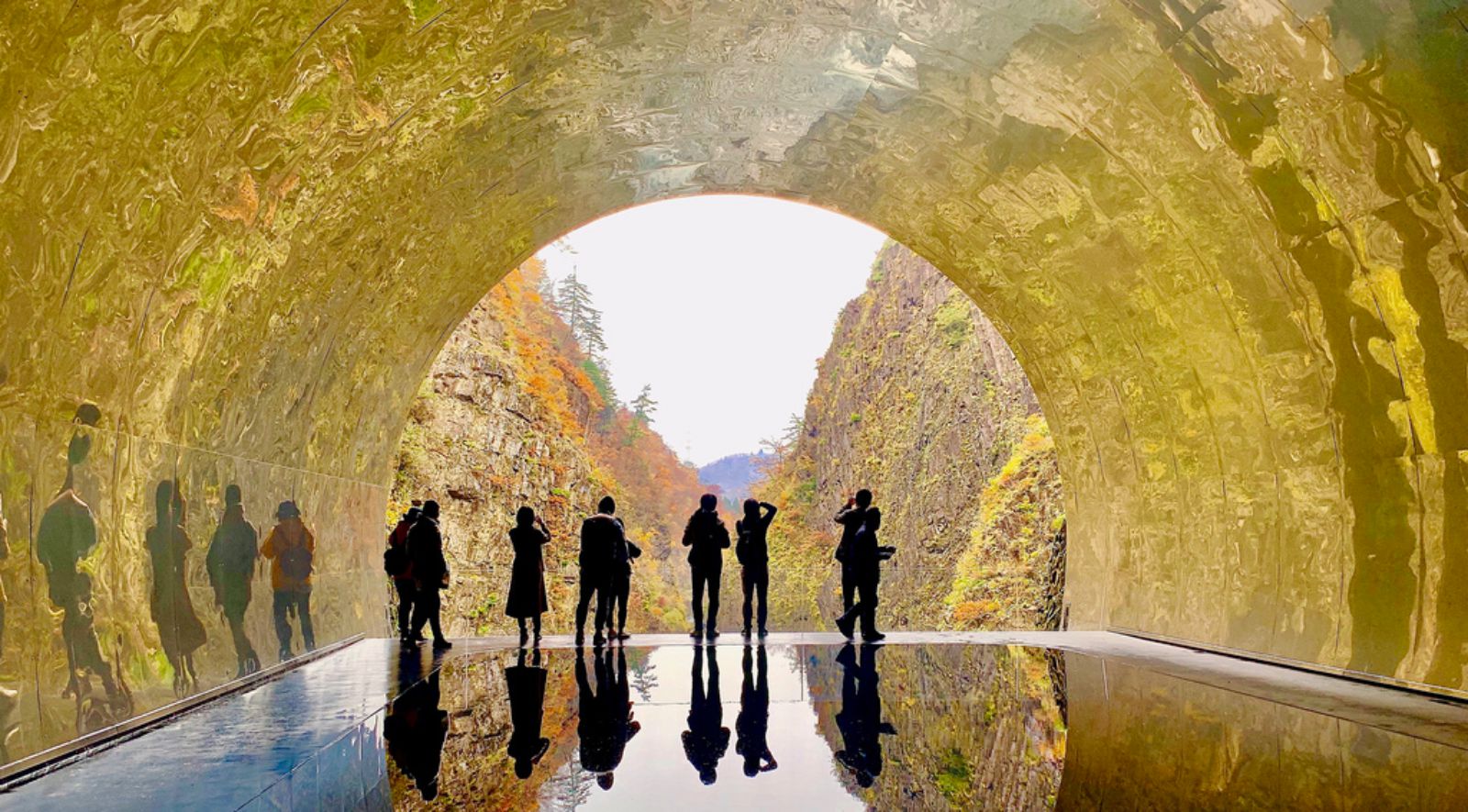In the recently opened 8th Echigo-Tsumari Art Triennale this summer in Japan, Ma Yansong, the principal partner of MAD Architects, has shown a new artwork “Flow”. It reinvents part of the artwork “Tunnel of Light” that completed in 2018. Meanwhile, the artwork is celebrated with a newly released book in the same name, Tunnel of Light, in three languages: Japanese, English and Mandarin.
The book thoroughly presents the social background, design process, theory, construction record, behind-the-scene stories of the project. It includes more than 120 precious imageries, manuscripts, initial renderings, drawings, and construction photos, unrolling a panoramic view on the rebirth of tunnel in Kiyotsu Gorge and the revitalization of Echigo-Tsumari area.

Echigo-Tsumari
The Echigo-Tsumari Art Triennale is one of the largest art festivals in the world as well as the pioneer of regional art festivals taking place across Japan. Participants include internationally renowned artist, such as Yayoi Kusama and Cai Guoqiang, Japanese artist and local population. Mr. Kitawaga, known as the father of land art festival, studied the Echigo-Tsumari area since 1996 and launched the triennale in 2000.
The cultural and landscape of Echigo-Tsumari is shaped by mountains, river and heavy winter snow. However, when the traditional agriculture gradually declined and social production mode changed, young generation began moving to cities, leaving the farming lands behind. Both local life and economies crumbled in the shadow of modernization and urbanization. Kitawaga hopes to lead the local economy out of impasse through art and promote a more harmonious relationship between human and nature. “Tunnel of Light” was born out of such spirit.

Kiyotsu Gorge and the Tunnel of Light
Tunnel of Light is located at Kiyotsu Gorge which is known as one of the three great gorges of Japan. The 750-meters long tunnel links three viewing platforms where tourists can look out on the surrounding scenery. MAD finds that the tunnel to be more than a passageway. Instead, it fuses “natural elements” with sensibilities of bodies and minds, escaped from the everyday hubbub to create a journey of art.
Ancient Chinese philosophers understood the formation and interactions of the natural world in terms of the five elements – metal, wood, water, fire and earth. MAD took inspiration from this theory to re-envision the entrance and five key points within the tunnel. The newly released installation “Flow” creates a feeling of whirled time-space at the second platform.

Art Journey through the Tunnel
MAD rebuilds the entrance of Kiyotsu Gorge tunnel. The building has two floors. Ticket offices, a café, and a souvenir shop selling fine handmade crafts made by the villagers occupy the ground floor. The space emits a warm and open atmosphere; a place to rest before people set out on their journey.
As a prequel to the tunnel, an ingeniously designed foot space makes up the upper floor. Above, the top of the conical roof forms an unusual skylight framed by prismatic mirrors, capturing the running river in the distance as an inverted reflection. The space is shrouded in mists coming from the bath, filled with aromatic and visual ambiguities. As the gurgling and chirping sinks in, the journey of the Tunnel of Light begins.
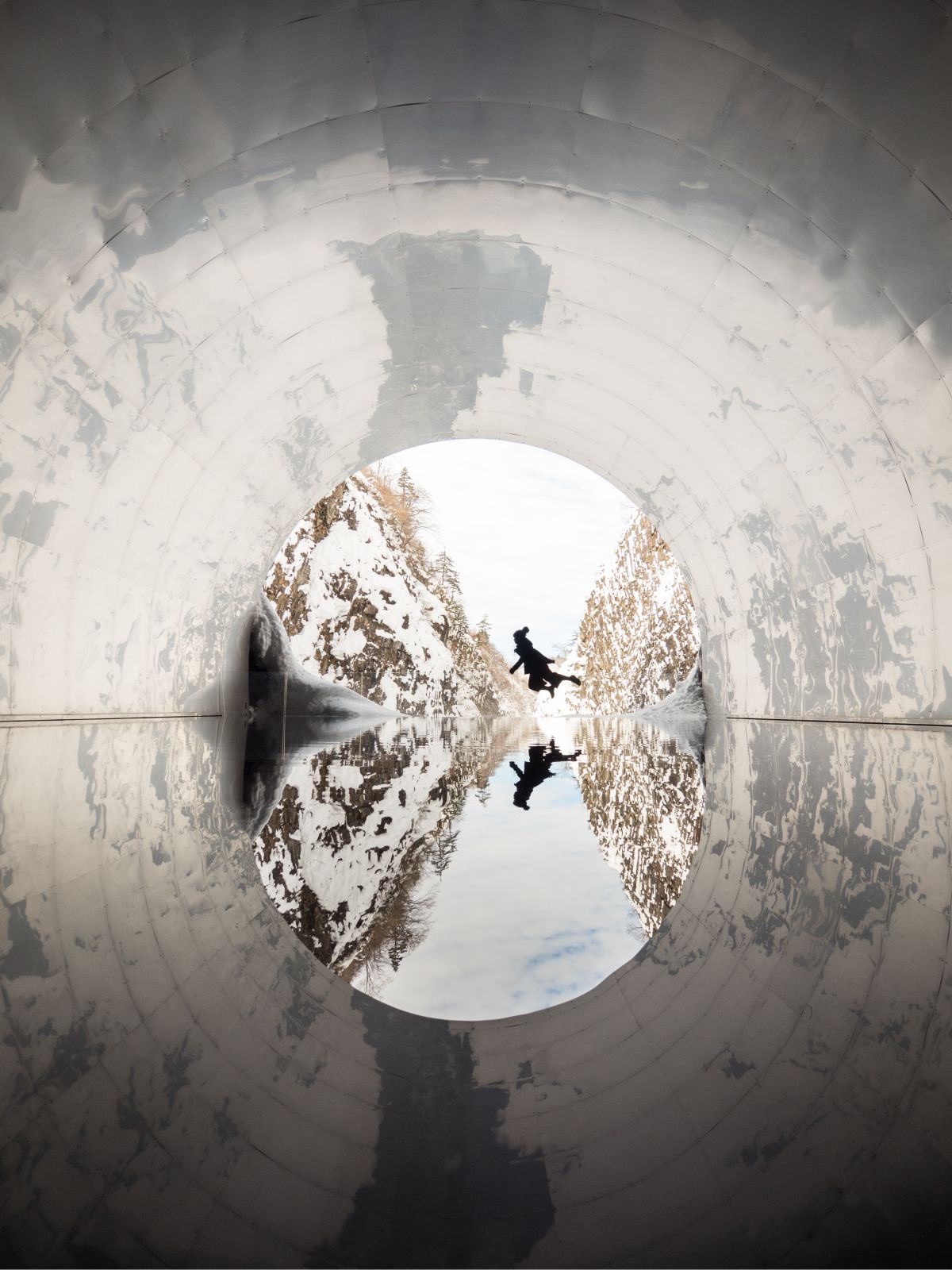
After entering, visitors will soon arrive at the first observation deck. MAD preserved the historic state of the tunnel, for visitors to get a glimpse of the original scenery of the gorge. At the second platform, visitors will encounter a “bubble” bathroom, as if the reminiscent of a spacecraft that can disappear at will. The bubble has a mirror surface, reflecting both the grey interior and the natural scenery outside, making itself vanish from sight. The third platform is covered by irregular mirrors like water drops that emit a warm tangerine light around their peripheries.
As visitors linger, these mirrors become eye-like. Here on the arching concrete wall of the tunnel, they become windows that lead to unknown worlds. The fourth platform brings visitors into a light cave. MAD designed a shallow pond that stretches all the way to the end of the platform. The reflective water surface brings the outside scenery into the tunnel. The water almost brims over the edge of the platform and seamlessly joins the actual landscape, forming a complete circle.

Rebirth of the Bubble “Flow”
For the 8th Echigo-Tsumari Art Triennial, MAD has reinvented the space around the bubble, and name it “Flow”. Through black and white helices, MAD abstracts and captures the exuberant spirit of the Kiyotsu River, providing visitors with an immersive and dynamic spatial experience. One feels as if they are passing through a warped time-space, or falling into the many whirlpools of the lively Kiyotsu River.
Stories in the Book
The newly published book, Tunnel of Light, reveals more behind scene stories and construction process. In tandem with the scheme’s construction, MAD delivered a series of presentations to the residents of Onsen Street, where the Kiyotsu Gorge Tunnel is located. People have lived on this street for generations, and have witnessed the short-lived prosperity brought by the tunnel. Though some objected to the project, MAD thoroughly explained the project, show respect to local history, discuss residents’ suggestions and gain support from local population. Source by MAD

- Location: Tunnel of Light Art, Echigo-Tsumari, Japan
- Architect: MAD
- Principal Partners: Ma Yansong, Yosuke Hayano, Dang Qun
- Design Team: Hiroki Fujino, Kazushi Miyamoto, Yuki Ishigami, Kenji Hada
- Executive Architect: Green sigma Co., Ltd.
- Time: 2018, 2021
- Photographs: Nacasa & Partners Inc, Tokamachi Tourist Association, Courtesy of MAD
- Ma Yansong, Tunnel of Light Book
- MAD Editing Team: Fiona Qi Ziying, Tammy Xie, Zhang Liming, Shao Yixue, Gu Xiaoyan
- Edited by: MAD Architects
- Published by: Fram Kitagawa
- Publisher: Gendaikikakushitsu Publishers
- Printed by: Sanei Printery Co,.Ltd
- Japanese Translation: Kanaa Hayano, Hu Jialin
- Japanese Proofreading: Junko Haraguchi
- English Translation: Lin Yan, Josh Dyer
- English Proofreading: Niall Patrick Walsh
- Graphic Design: One Thousand Times
- Date of Publication: November 30, 2021
